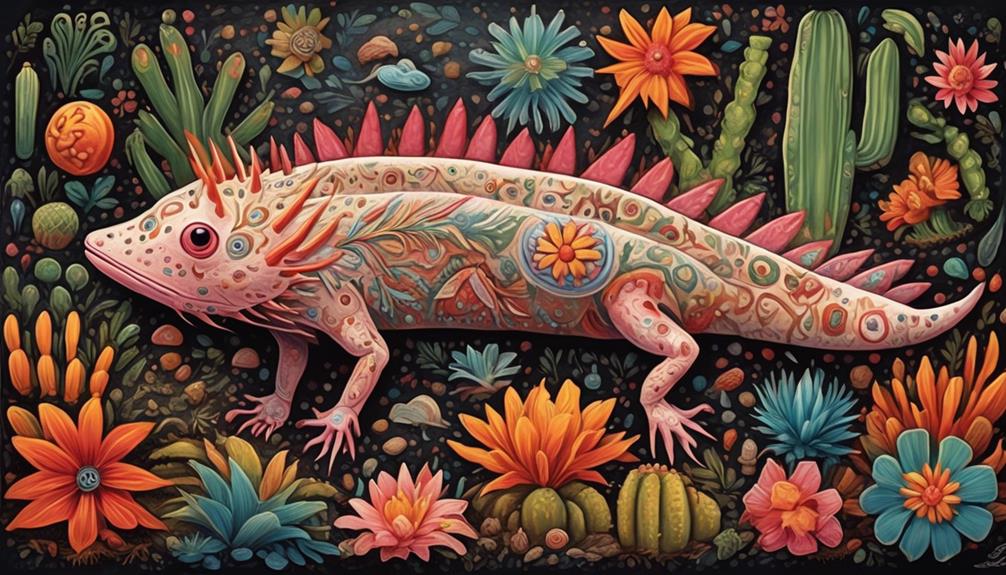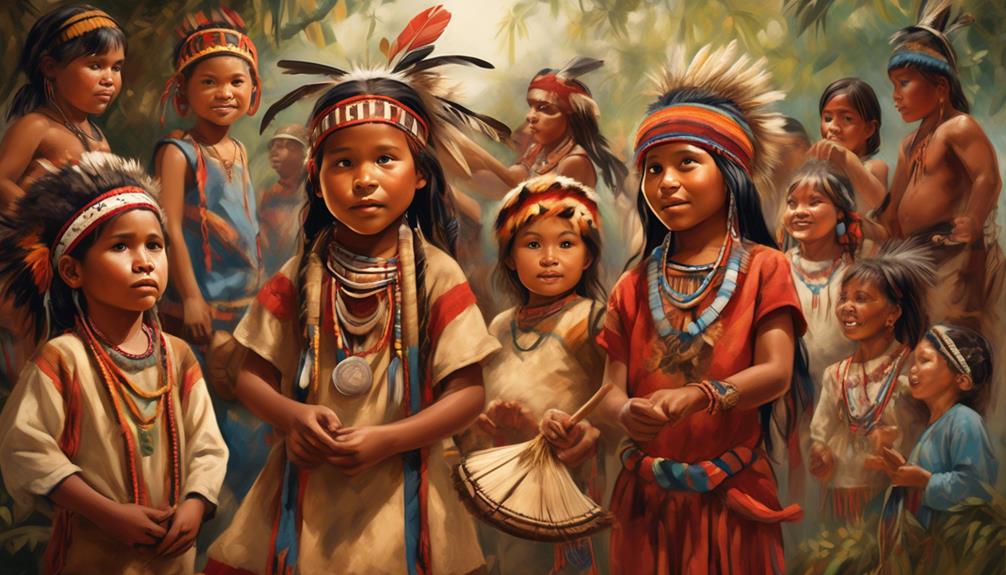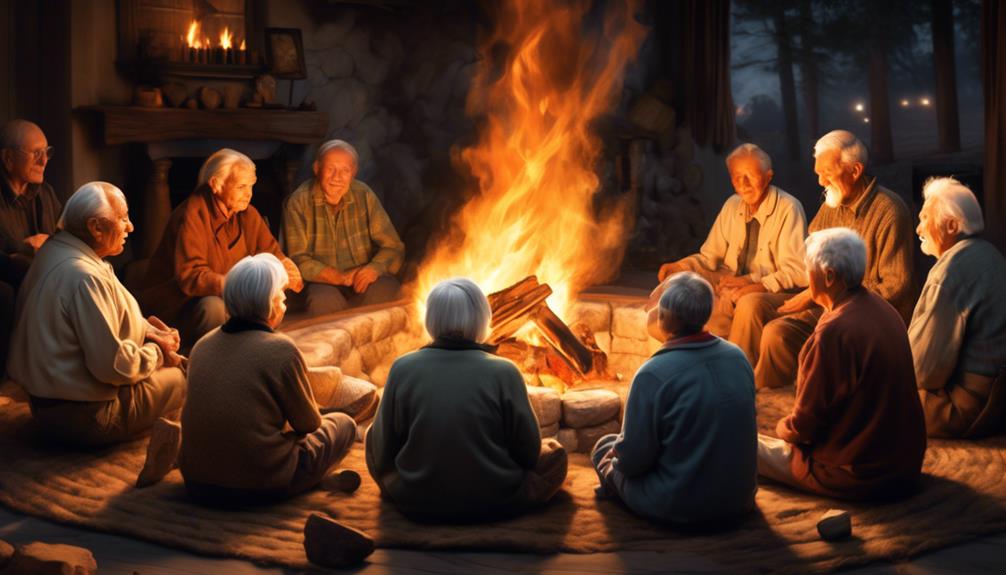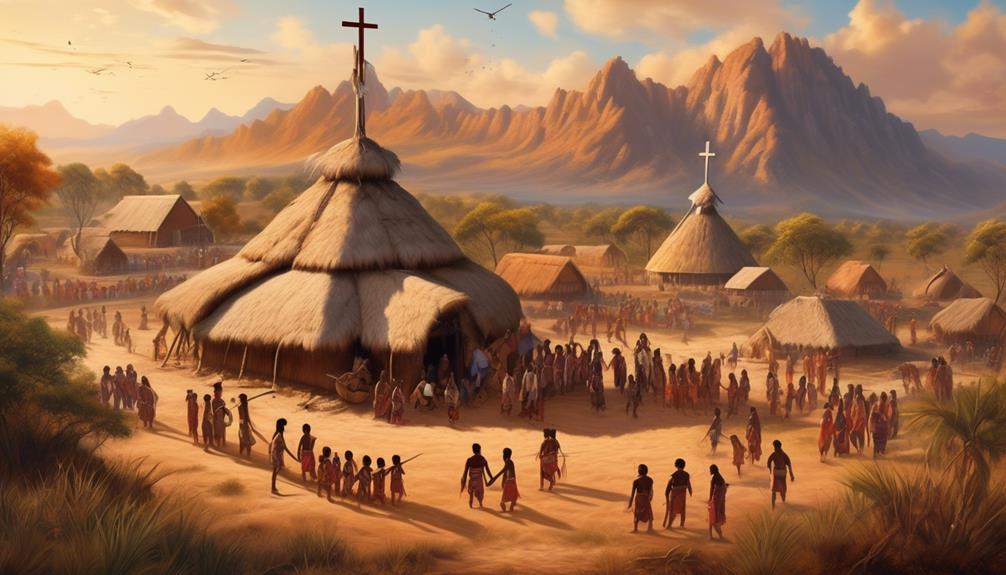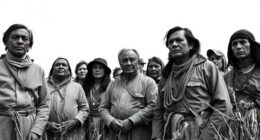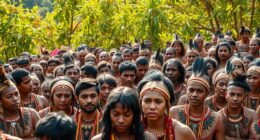When discussing Mexico’s rich indigenous cultural heritage, the axolotl emerges as a captivating symbol with profound cultural significance. Its presence in the folklore of ancient indigenous groups and its ongoing importance in the modern indigenous community’s identity attest to its enduring relevance.
But why does this enigmatic amphibian hold such a revered place in the hearts and minds of the indigenous people of Mexico? Its significance reaches far beyond its unique biological traits, and delving into its cultural and mythological roots unveils a deeper connection to the indigenous heritage of Mexico.
Key Takeaways
- The axolotl held a revered status in ancient Aztec and Maya civilizations, symbolizing transformation and renewal.
- Its regenerative abilities and cyclical nature reflected indigenous beliefs about life and death.
- Conservation efforts for the axolotl contribute to the preservation of indigenous heritage and knowledge.
- The axolotl plays a pivotal role in shaping and preserving indigenous identity, representing resilience and adaptability.
Historical Significance of the Axolotl
The historical significance of the axolotl dates back to ancient Aztec and Maya civilizations, where it held a revered status in their mythology and religious practices. The axolotl, known as a 'water monster' in Nahuatl, the Aztec language, was deeply intertwined with creation myths and seen as a symbol of transformation and renewal. The Aztecs believed that the axolotl embodied the spirit of Xolotl, the god of lightning and death, due to its remarkable regenerative abilities. Similarly, the Maya civilization revered the axolotl, associating it with the god Chac, the deity of rain and fertility.
In contemporary times, the historical significance of the axolotl continues to captivate scientific research. Its unique biological traits, such as the ability to regenerate entire limbs and organs, have made it an invaluable subject for studying cellular and molecular processes. Scientists are particularly interested in unlocking the axolotl's regenerative abilities, with the hope of applying this knowledge to medical advancements, including tissue engineering and regenerative medicine.
The juxtaposition of the axolotl's historical reverence in indigenous cultures with its modern-day significance in scientific research underscores its enduring importance and cultural significance.
Indigenous Mythology and Symbolism
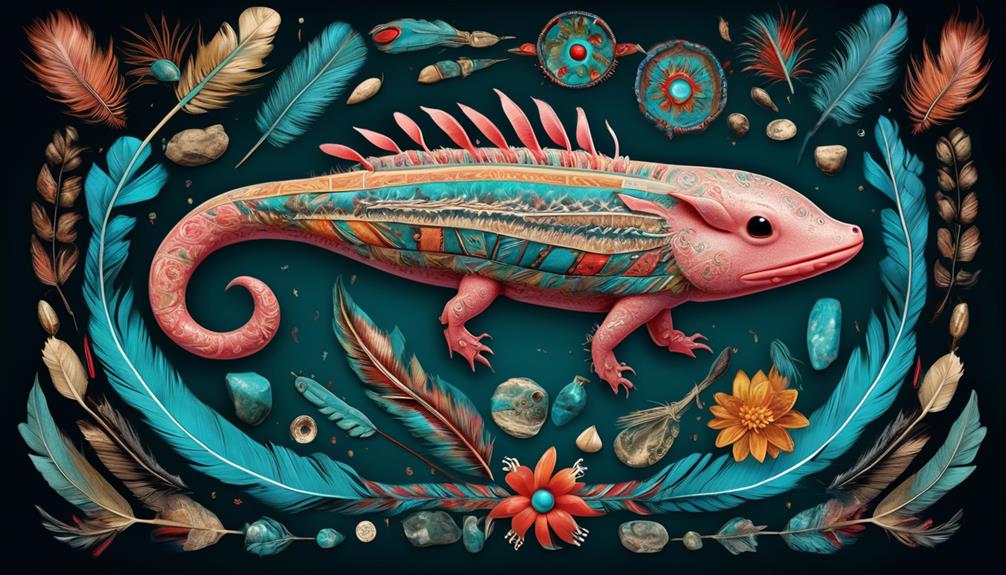
Entwined with ancient cosmologies and revered as a symbol of transformation, the axolotl embodies profound indigenous mythology and symbolism in Mexican heritage. Its mythological origins can be traced back to the Aztec civilization, where it was associated with the god Xolotl, who was often depicted as a monstrous creature with human and animal features.
In indigenous beliefs, the axolotl was considered a powerful symbol of metamorphosis and regeneration, reflecting the cyclical nature of life and death. This symbolism is deeply rooted in Mesoamerican cultures, where the concept of transformation held great spiritual significance.
Furthermore, the axolotl's ability to regrow lost limbs and its enigmatic neotenic characteristics, retaining its juvenile form into adulthood, contributed to its revered status in indigenous mythology. It was often seen as a representation of duality and balance, embodying both the past and the future, the terrestrial and the aquatic.
The axolotl's presence in indigenous mythology serves as a testament to the rich cultural tapestry of Mexico, where ancient beliefs intertwine with the modern world, preserving the legacy of indigenous wisdom and spirituality.
Axolotl Conservation and Cultural Preservation
Rooted in our exploration of indigenous mythology and symbolism, the imperative need for axolotl conservation and cultural preservation becomes evident in the face of modern challenges.
The axolotl, with its deep cultural significance to the indigenous peoples of Mexico, is facing a critical threat to its existence due to habitat destruction, pollution, and invasive species. Conservation efforts are crucial to protect this iconic creature, not only for its ecological importance but also for its cultural significance. It serves as a symbol of resilience and regeneration in indigenous lore, embodying the interconnectedness of nature and spirituality.
Efforts to conserve the axolotl also directly contribute to the preservation of indigenous heritage and knowledge. Through the preservation of the axolotl's natural habitat, traditional ecological knowledge passed down through generations can be upheld. The cultural significance of the axolotl is deeply intertwined with the traditions and beliefs of indigenous communities, making its conservation a vital part of safeguarding their cultural identity.
In comparison to other conservation initiatives, the preservation of the axolotl encompasses not only ecological concerns but also the protection of indigenous wisdom and heritage. It stands as a unique intersection of environmental conservation and cultural preservation, highlighting the interconnectedness of the natural world and the cultural tapestry of indigenous communities.
Contemporary Representation in Indigenous Art
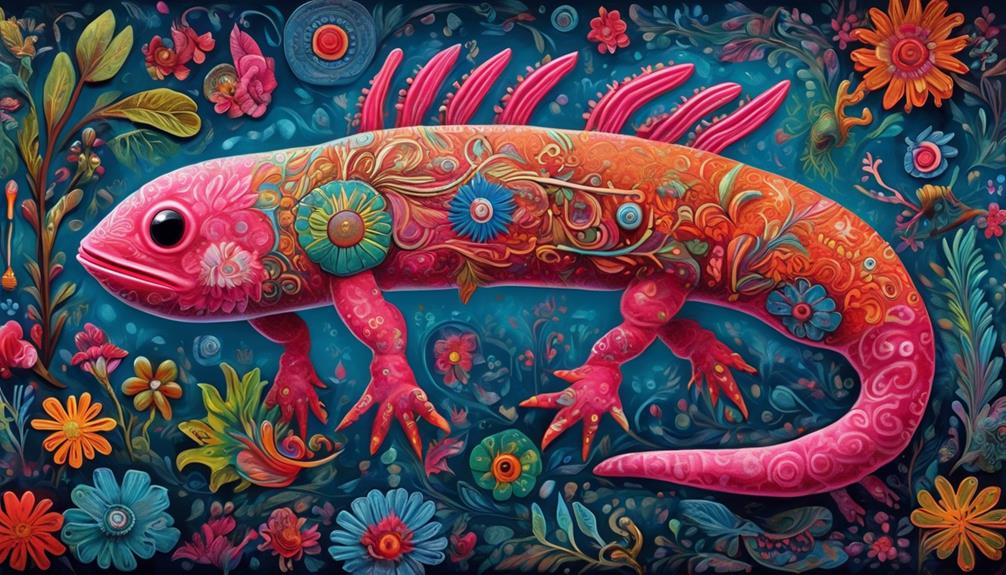
Indigenous artists today skillfully weave the symbolism of the axolotl into their contemporary works, infusing traditional cultural motifs with modern creativity. This fusion creates a powerful representation of cultural significance, bridging the gap between traditional beliefs and present-day existence.
In their art, indigenous creators evoke a range of emotions in the audience, including:
- Awe and Reverence:
By intricately depicting the axolotl, artists evoke a sense of wonder and reverence for the creature's resilience and unique characteristics, connecting viewers to the natural world in a profound way.
- Resilience and Adaptability:
Through their art, indigenous creators convey the message of resilience and adaptability, mirroring the axolotl's ability to regenerate and survive in diverse environments. This evokes feelings of strength and hope, inspiring audiences to embrace their own adaptability in the face of change.
The contemporary representation of the axolotl in indigenous art serves as a testament to the enduring significance of traditional beliefs in modern society, offering a glimpse into the cultural heritage of Mexico and the ongoing evolution of indigenous artistic expression.
Axolotl's Role in Indigenous Identity
In our examination of the axolotl's representation in indigenous art, we now turn our attention to its pivotal role in shaping and preserving indigenous identity.
The axolotl holds significant cultural significance within indigenous communities, serving as a symbol deeply rooted in traditional beliefs. Its presence in indigenous identity is multifaceted, reflecting a deep connection to the natural world and the ancestral heritage of indigenous peoples in Mexico.
The axolotl's role in indigenous identity is intricately woven into the fabric of cultural practices and beliefs. It represents resilience and adaptability, mirroring the enduring spirit of indigenous communities in the face of historical challenges. Furthermore, the axolotl's unique characteristics are often linked to indigenous creation stories and mythology, further solidifying its place in the preservation of traditional beliefs.
Comparatively, the axolotl's representation in indigenous identity differs from its portrayal in contemporary art. While modern depictions may focus on aesthetic and ecological aspects, indigenous representations emphasize the spiritual and symbolic significance of the axolotl within their cultural framework. This distinction underscores the profound depth of meaning that the axolotl holds within indigenous identity, transcending mere artistic representation to embody a rich tapestry of traditions and beliefs.
Frequently Asked Questions
What Are the Traditional Rituals or Ceremonies Involving the Axolotl in Indigenous Communities?
Traditional practices and ceremonial significance play a vital role in the preservation of indigenous heritage.
In Mexico, the axolotl holds great cultural importance, featuring in various traditional rituals and ceremonies.
Conservation efforts are aimed at protecting this sacred creature, ensuring its role in cultural preservation.
The axolotl's significance in indigenous communities underscores the deep-rooted connection between cultural traditions and environmental conservation.
How Do Indigenous Communities Perceive the Axolotl's Connection to Their Cultural Identity in Modern Times?
In modern times, indigenous communities perceive the axolotl as an integral part of our cultural identity. This perception is deeply rooted in our traditions and history.
The axolotl symbolizes resilience, adaptability, and interconnectedness with nature. Its significance resonates with our values and beliefs, serving as a powerful reminder of our heritage.
As we navigate the challenges of today, the axolotl continues to hold a special place in our cultural identity, shaping our collective consciousness.
Are There Any Specific Taboos or Restrictions Related to the Axolotl in Indigenous Traditions?
Taboo beliefs surrounding the axolotl in indigenous traditions are tied to its significance in cultural identity. The axolotl's role in indigenous heritage is deeply intertwined with taboos and restrictions, highlighting its spiritual and traditional importance. Conservation methods are crucial to protect this symbol.
Understanding these connections is vital for preserving the axolotl's place in indigenous culture and ensuring its continued significance for future generations.
What Impact Has Urbanization and Pollution Had on the Axolotl's Significance in Indigenous Heritage?
Urbanization and pollution have eroded the axolotl's significance in indigenous heritage like relentless waves against a fragile shore. These influences have disrupted the natural habitat, impacting the cultural identity tied to this enigmatic creature.
However, conservation efforts strive to preserve this symbol, embodying the resilience of indigenous traditions in the face of modern challenges.
The axolotl serves as a poignant reminder of the delicate balance between progress and preservation.
How Do Indigenous Communities View the Scientific Conservation Efforts for the Axolotl Compared to Their Own Traditional Preservation Methods?
We see traditional knowledge as vital in understanding the axolotl's significance.
Conservation efforts, while valuable, must align with indigenous perspectives. They should complement, not overshadow, our time-tested methods.
Scientific methods and traditional preservation techniques can coexist harmoniously, each offering unique insights.
It's essential to recognize the importance of indigenous wisdom in this delicate balance, ensuring that conservation efforts respect and integrate our ancestral knowledge.
Conclusion
The axolotl, with its unique appearance and rich cultural significance, serves as a powerful symbol of indigenous heritage in Mexico.
Its historical roots, mythological symbolism, and conservation efforts highlight the deep connection between the axolotl and indigenous identity.
Through contemporary representation in art and its role in cultural preservation, the axolotl continues to captivate and inspire, reminding us of the importance of honoring and preserving indigenous traditions and heritage.
Its presence is a vibrant tapestry of Mexico's rich cultural history.
